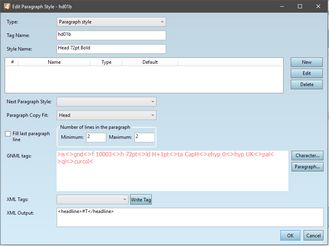Fitting presets summary
You can apply fitting presets on selected paragraph or on the entire text, in body text or in a headline.
Several application methods are available. Any method can be run by a menu command, or hot-key. Some of methods prompt users to select a fitting preset, while other use predefined, or default presets (if available) In particular, methods P01, P04, P08 and P11 require default preset to be assigned to either style or format; the method T01 requires default preset to be assigned to the format.
All the below methods are available during text editing (in Ted4, or in Fred4).
|
|
•Method refers to the content of the script you run. You can prepare various scripts for different purposes, thus, the action depends of your system configuration. •Apply regards the scope: para refers to paragraph fitting, while last ln. regards the last or only line of the paragraph, and text regards entire text. •Action refers to the outcome: shrink means the paragraph is shrunk for the specified number of lines, stretch means it is expanded to have specified number of lines more, clear means the previous fitting actions are reset, while fit means that method selects whatever more suitable, either to shrink or to stretch. •Set can be: def (default fitting set for the current paragraph style), spec (specified as parameter of the method), or sel (selected in a dialog box). •Ln refers to number of lines that are removed or added, while * means that the method attempts to set as many lines as specified in the style. The following screenshot shows a paragraph style that sets 2 lines required (Minimum: 2 Maximum: 2). •Prompt can be: yes (the command displays the prompt), no (the command is silent).
|
Fitting of entire text by flexible leading
This is usually performed by applying a fitting global style in the first paragraph of a text. The implementation depends on your customized configuration.

